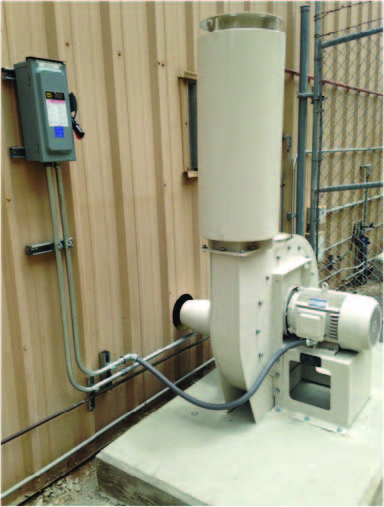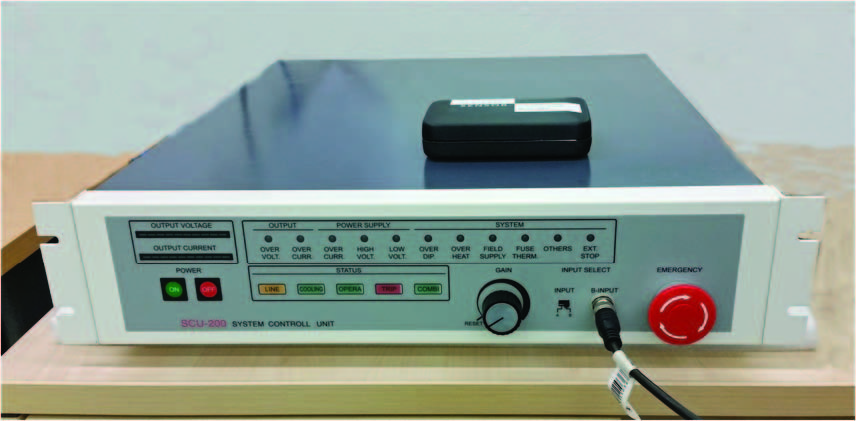(Page 2)
Wiring Considerations – Power, Grounding and Signal Routing
Wiring is always an issue that deserves careful planning. You should plan separate conduits or troughs for signal cables to minimize electrical noise injection. You will need both three-phase and single-phase electrical service. It is likely that these will be separate. In the United States, the most common industrial three-phase supply (408/277 VAC 4-wire wye) provides a line-to-line voltage of 480 VAC; this is what you want to power your shaker amplifier and blower. However, many industrial buildings then use the resulting 277 VAC line-to-neutral voltage for lighting circuits. That may be fine for your overhead lighting, but you are going to need 120 VAC single-phase outlets for the controller, other test instruments, trouble lights and power tools. You can only get that from a 240/120 VAC split-phase, a 208/120 VAC 4-wire wye three-phase drop or a purchased 408/277-to-120 transformer.
It is extremely important to provide proper grounding of the system, both for operational safety and to preclude line-frequency ground loop signal problems. The main ground lead should be applied to the amplifier and the shaker and controller should derive their ground connections from this point, using no smaller than 12 AWG copper wire. Signal cables deserve special attention. In order to minimize noise injection and ground-loop problems, analog signal leads should be kept to minimum length. Note that the controller accepts the Control acceleration signal from the shaker and may also need to accept other measured accelerations (Monitor and Limit signals) from the shaker-mounted DUT. Hence, the controller wants to me near the shaker. The controller Drive output connects to the amplifier which connects to the shaker. Clearly, the shaker, amplifier and controller need to be close to one another. This does not imply, however, that the PC and the system operator need to near the shaker.
It pays big productivity benefits to provide a comfortable environment for the staff that runs your vibration tests. This implies placing the PC in a clean, sound-treated and air-conditioned space adjacent to the shaker installation. The recommended Crystal Instruments controllers all use Ethernet® as the interface between the PC and the controller. Ethernet allows long separation distances between the PC and the controller with no loss of communication speed or system reliability. Of very special importance is the fact that Ethernet uses no ground-referenced signals. Because all of its digital signals are differential, an Ethernet connection cannot cause a highly problematic ground loop between the remote PC and the control system (as USB and older PC interfaces could).
Blower located outside
Be aware that local Electrical Codes may influence the wiring of your laboratory. For instance, Even though the blower is powered by the amplifier, city codes often require a 3-phase disconnector near the blower. This is particularly likely if the blower is installed outside of your building. Local building codes may also require a cage or barrier to prevent accidental contact with the blower.



